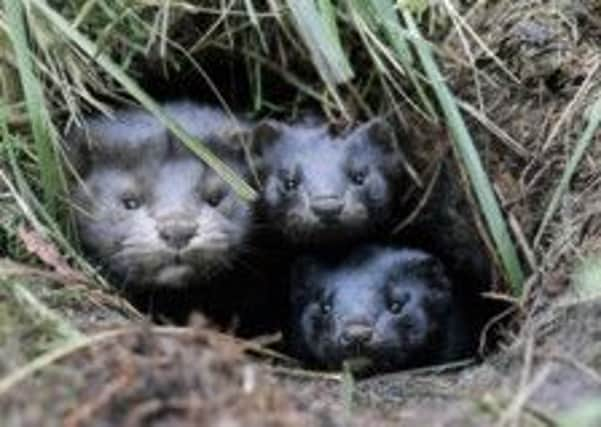Invasive mink killing native wildlife in Highlands


The American mink was first introduced to Scotland in 1938 for fur farming, but their escape and deliberate release have left native species at risk.
Tens of thousands of the species are now believed to be roaming the rivers and streams around the country and a call has been put out to track the deadly killers.
Advertisement
Hide AdAdvertisement
Hide AdThere have been numerous recent sightings of American mink running wild in Scotland, particularly in the Inverness and Beauly areas.
A conservation body is so concerned about what is happening to native wildlife it is asking for the public’s help to bring them under control.
The Ness and Beauly Fisheries Trust (NBFT) has joined up with the Scottish Mink Initiative (SMI) to encourage volunteers to report on and help trap the voracious predators.
NBFT biologist Chris Daphne said: “American mink are an invasive non-native species which have a huge negative impact on our native wildlife.
“They feed on water voles, ground nesting birds – adult birds, chicks and eggs – rabbits, fish, domestic foul such as hens and ducks and economically important birds such as pheasants and partridges.
“They can be easily confused with otters and pine martens, as well as polecats, but those species are nowhere near as problematic. Our project is not an eradication exercise, but a way to control the species.”
He said American mink can remove or cause serious decline to many of the native species which people like to see as they walk, canoe and go birdwatching in the Scottish countryside.
American mink – also known as Neovison vison – are a member of the Mustelid family, whose other members include weasels, otters and badgers. They all have a musk gland which excretes pungent smelling oil which they use to mark their territories.
Advertisement
Hide AdAdvertisement
Hide AdThere are two species of mink – the European mink (Mustela lutreola) and the American mink.
The European mink is native to continental Europe and is thought to have originated in the UK about 400,000 years ago. American mink is native to North America but is now found across much of the world due to human intervention.
In many parts of the world American mink are bred in farms for their thick glossy fur. The first mink farm opened in England in 1929. The first farm opened in Scotland in 1938, where they were recorded in the wild the same year.
The first records of breeding in the wild were in 1962 from the River Ugie in Aberdeenshire, where it was reported that mink had probably been breeding “for some time”, and from the River Deveron, in Moray.
Today’s population are the descendants of mink who either escaped from the farms or were set free by animal rights activists.
Mink are carnivores and a generalist predator, which means they do not have a specific diet and will eat whatever they catch. Their varied diet means they can survive in many different habitats.
Another reason for their big impact on native species is their high metabolic rate which means they eat approximately a third of their body weight every day.
Daphne added: “At this time of year juvenile mink are starting to disperse and establish their own territories.
Advertisement
Hide AdAdvertisement
Hide Ad“The species is highly adaptable especially in their feeding behaviour. This is dependant on available prey so when one food source is exhausted, they simply switch to another.”
He said American mink are also prolific breeders and can have up to ten kits a year although the average is four to six. They have no natural predators in the UK – except man.
The SMI is run by local fisheries trusts who manage volunteers in their area.